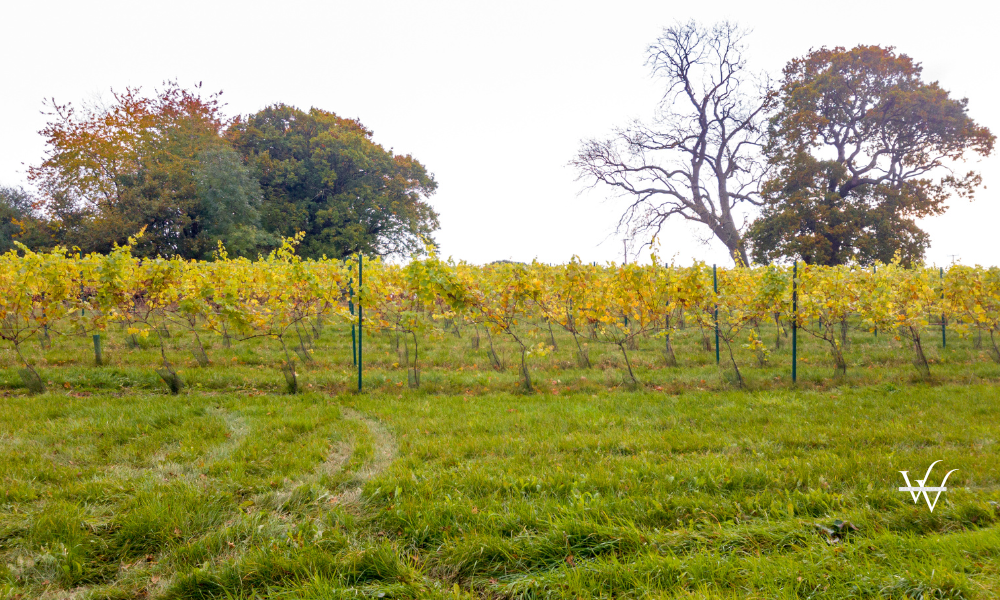The English wine industry is looking abroad to sustain its growth following one of the most successful harvests in its history. After a particularly warm summer, producers across southern England report excellent grape quality and promising yields.
According to WineGB, the country’s wine trade association, wineries are now betting on export expansion to compensate for stagnating domestic sales.
Since 2020, the vineyard area in England has grown by 30%, while total production has increased by an average of 7% per year since 2000. This expansion has been driven by climatic improvements, which have made areas once devoted to traditional crops, apple orchards, or even golf courses suitable for viticulture. Both local entrepreneurs and international wine companies have invested in land, especially in the southern counties, where conditions are now comparable to those of northern France several decades ago.
The reputation of English sparkling wines continues to rise. In September 2025, a sparkling wine from southern England outperformed several French Champagnes in a prestigious international competition, strengthening global recognition and opening export markets in Norway, Japan, and China.
However, the domestic market remains challenging. The British economy’s slowdown has affected consumption of premium products, including sparkling wines. In 2024, 6.2 million bottles of English sparkling wine were sold domestically — 70% of total wine sales, but with no growth from the previous year. By contrast, exports increased by 35%, now representing 9% of total sales, a share that WineGB aims to double by 2030.
Norway has emerged as the leading export destination by volume. Data from the Vinmonopolet, the Norwegian state alcohol monopoly, show that imports of English sparkling wine rose from just 451 liters in 2015 to over 111,000 liters in 2024. Norwegian sommeliers note that local consumers appreciate the freshness and precision of English wines, often comparing them favorably with Champagne, while recognizing their distinct regional character.
Pricing places English sparkling wines firmly in the premium category. Brands such as Chapel Down and Nyetimber retail between 30 and 42 GBP (approximately 35–49 EUR) per bottle, aligning them with renowned French labels.
Climate remains both an opportunity and a risk. Alistair Nesbitt, CEO of Vinescapes, explains that the average temperature during the growing season in England has increased by between one and one and a half degrees Celsius over the past half-century, improving ripening conditions. Yet, this trend also brings greater volatility, as illustrated by this year’s persistent rainfall, which has reportedly halved the yield compared to last year.
Despite these challenges, England retains a comparative advantage over southern European regions facing droughts and extreme heat. This has attracted sustained international investment for more than a decade. Among the most notable investors are the French Champagne house Taittinger and the American group Jackson Family Wines, both of which have established vineyards in the country.
With strong export momentum, growing international recognition, and a climate increasingly favorable to high-quality sparkling production, English wine is consolidating its position among Europe’s most dynamic and promising viticultural regions.
Source: Vinetur

